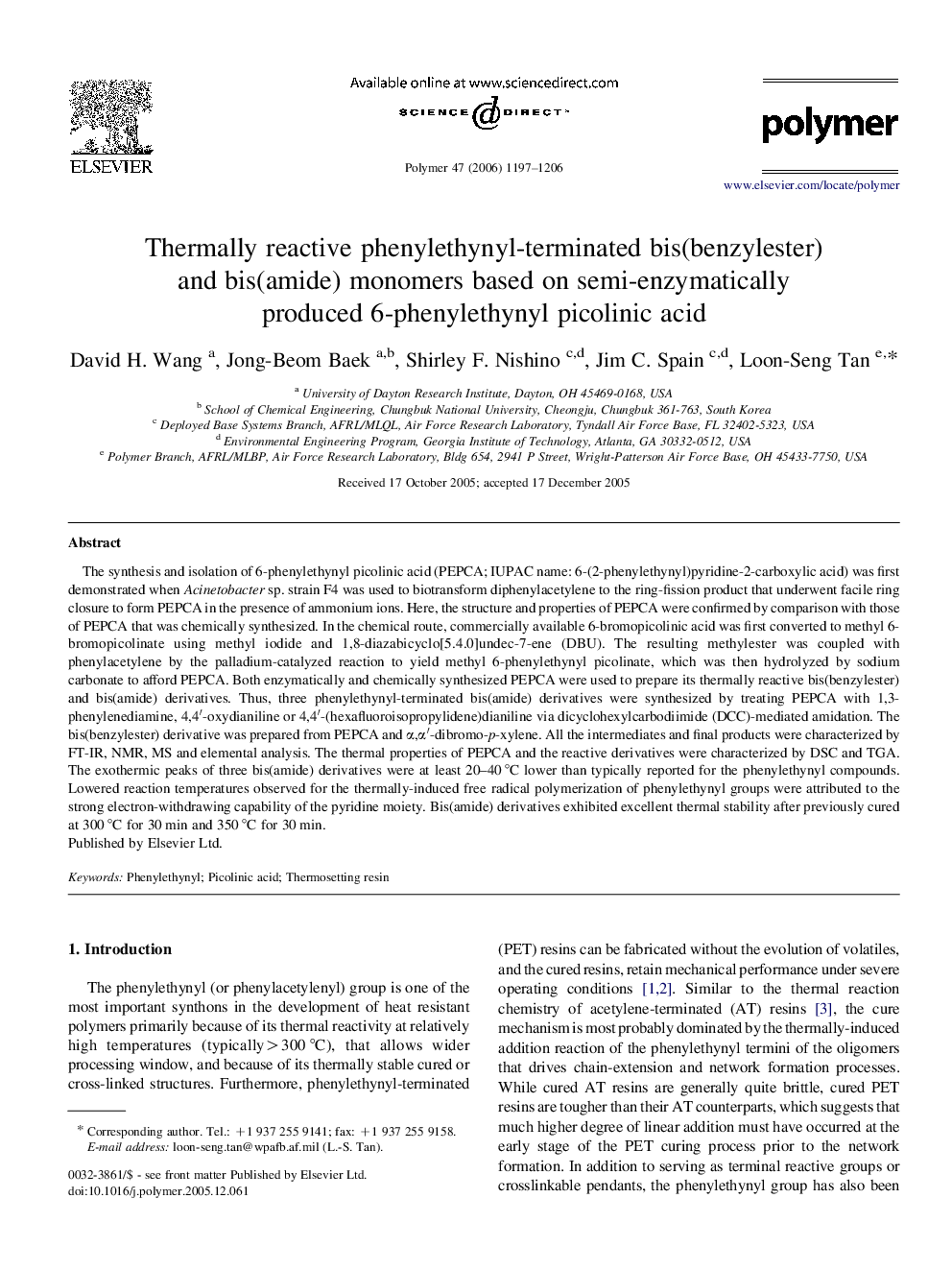| کد مقاله | کد نشریه | سال انتشار | مقاله انگلیسی | نسخه تمام متن |
|---|---|---|---|---|
| 5186515 | 1381106 | 2006 | 10 صفحه PDF | دانلود رایگان |

The synthesis and isolation of 6-phenylethynyl picolinic acid (PEPCA; IUPAC name: 6-(2-phenylethynyl)pyridine-2-carboxylic acid) was first demonstrated when Acinetobacter sp. strain F4 was used to biotransform diphenylacetylene to the ring-fission product that underwent facile ring closure to form PEPCA in the presence of ammonium ions. Here, the structure and properties of PEPCA were confirmed by comparison with those of PEPCA that was chemically synthesized. In the chemical route, commercially available 6-bromopicolinic acid was first converted to methyl 6-bromopicolinate using methyl iodide and 1,8-diazabicyclo[5.4.0]undec-7-ene (DBU). The resulting methylester was coupled with phenylacetylene by the palladium-catalyzed reaction to yield methyl 6-phenylethynyl picolinate, which was then hydrolyzed by sodium carbonate to afford PEPCA. Both enzymatically and chemically synthesized PEPCA were used to prepare its thermally reactive bis(benzylester) and bis(amide) derivatives. Thus, three phenylethynyl-terminated bis(amide) derivatives were synthesized by treating PEPCA with 1,3-phenylenediamine, 4,4â²-oxydianiline or 4,4â²-(hexafluoroisopropylidene)dianiline via dicyclohexylcarbodiimide (DCC)-mediated amidation. The bis(benzylester) derivative was prepared from PEPCA and α,αâ²-dibromo-p-xylene. All the intermediates and final products were characterized by FT-IR, NMR, MS and elemental analysis. The thermal properties of PEPCA and the reactive derivatives were characterized by DSC and TGA. The exothermic peaks of three bis(amide) derivatives were at least 20-40 °C lower than typically reported for the phenylethynyl compounds. Lowered reaction temperatures observed for the thermally-induced free radical polymerization of phenylethynyl groups were attributed to the strong electron-withdrawing capability of the pyridine moiety. Bis(amide) derivatives exhibited excellent thermal stability after previously cured at 300 °C for 30 min and 350 °C for 30 min.
Journal: Polymer - Volume 47, Issue 4, 8 February 2006, Pages 1197-1206